Bahía de la Ascensión
A paradise revisited 35 years later, in the hope of making a splash for elasmobranch conservation
My graduate students and I just spent a few days in Punta Allen, the only human settlement in Bahía de la Ascensión, in the Biosphere Reserve of Sian Ka’an. This visit marked the start of my students’ graduate research and served for most of them to get to know the area for the first time. Our work during this trip focused again, in recovering Local Ecological Knowledge from old fishers so that we can later-on reconstruct the ecological role of this magnificent site as a shark and ray nursery area.
Punta Allen has always been a fishing village, it has currently a population of about 700 people, and lobster has always been its main fishery resource.

Live lobsters being weighed at the landing point in Punta Allen’s pier. Photo © Ramón Bonfil
The town is very quiet and with few options for food (a challenge to us as a team of hard-working temporary visitors). It is located at the northern end of the bay, at the tip of a long strip of land that comes down the coast from Tulum.
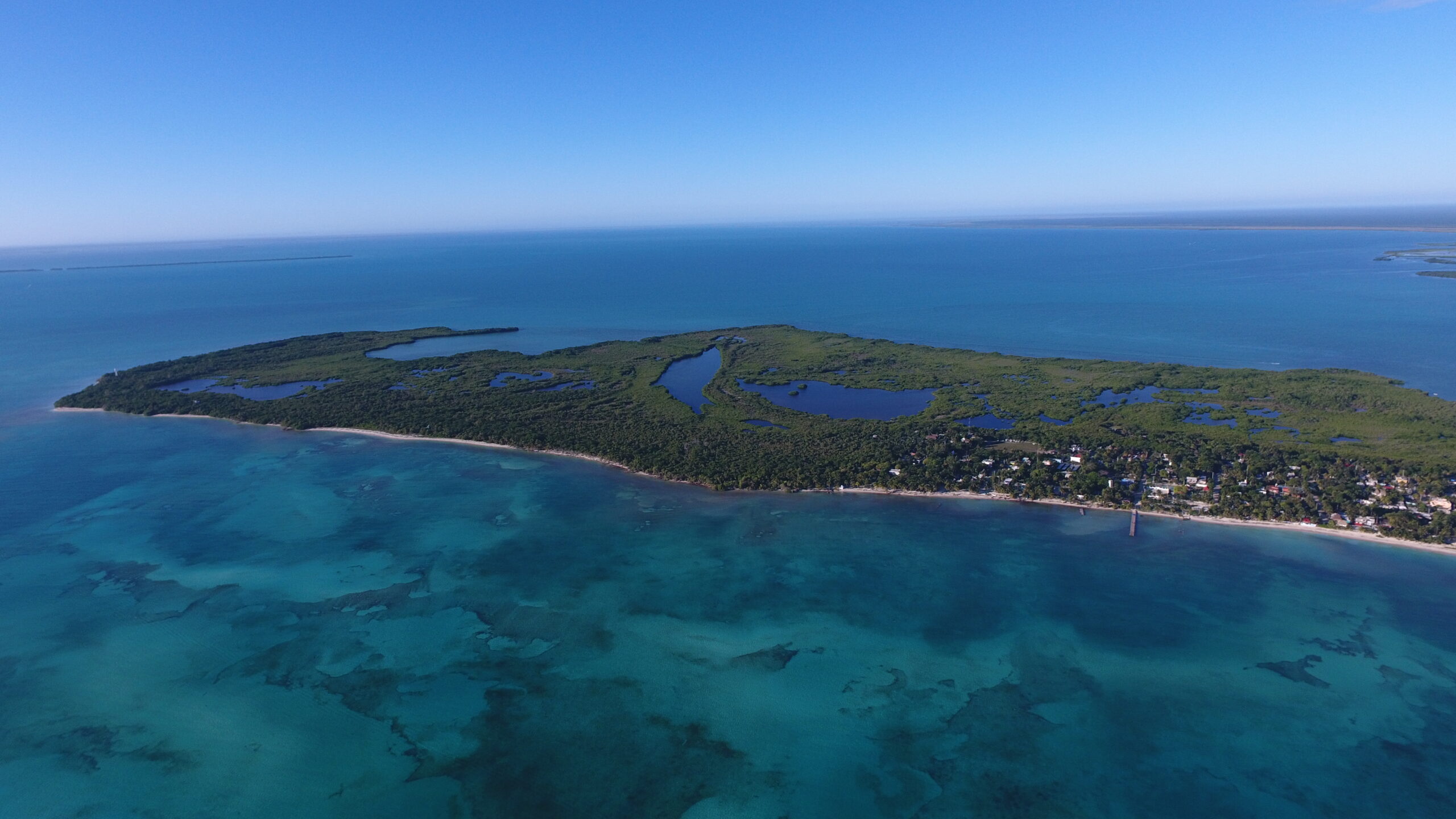
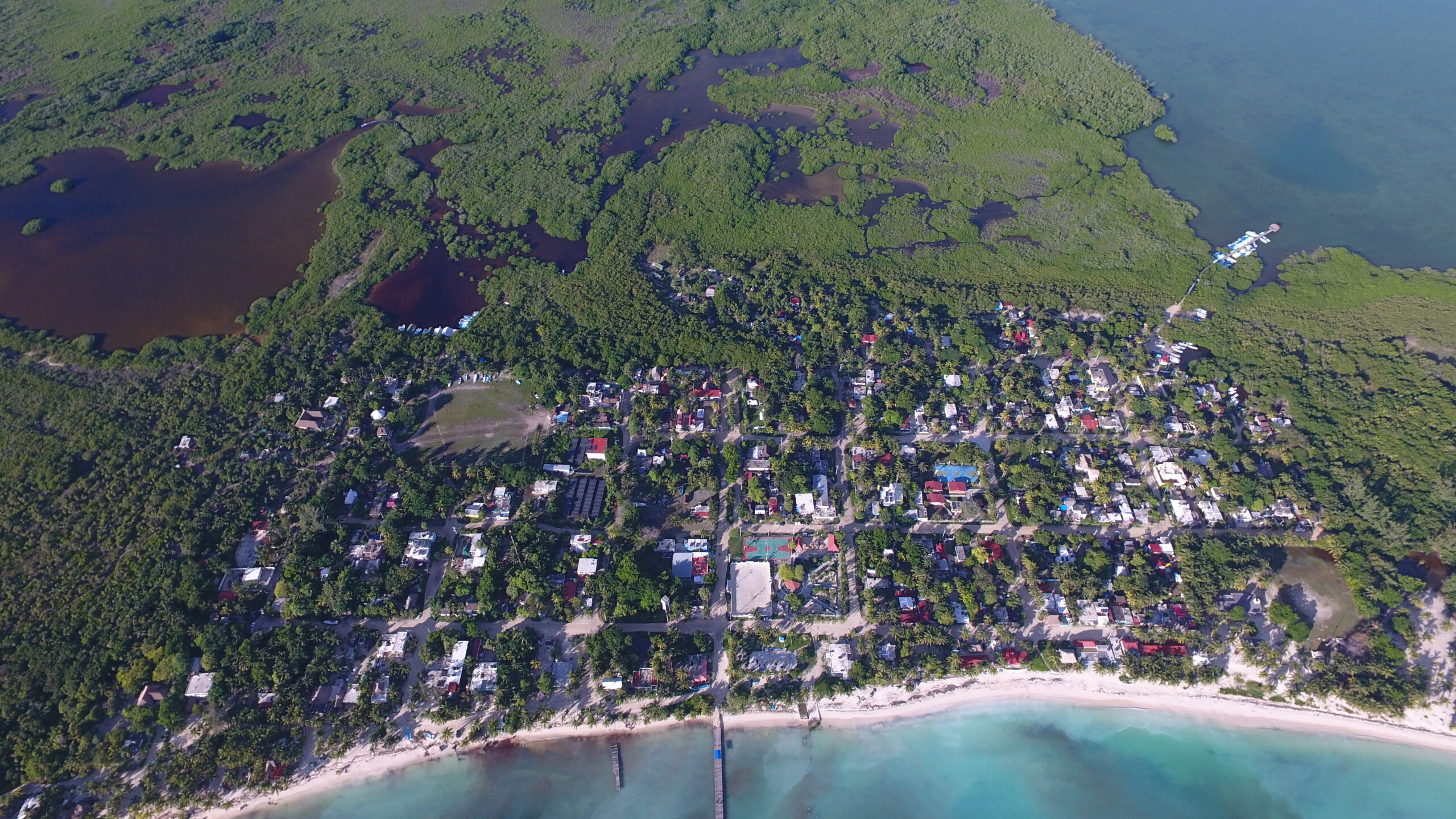
Aerial view of the human settlement of Punta Allen. Photos © Ramón Bonfil
The bay is about 35 km wide and 35 km long, and very shallow, with maximum depths of about 7 m, and a total surface of 740 km2.
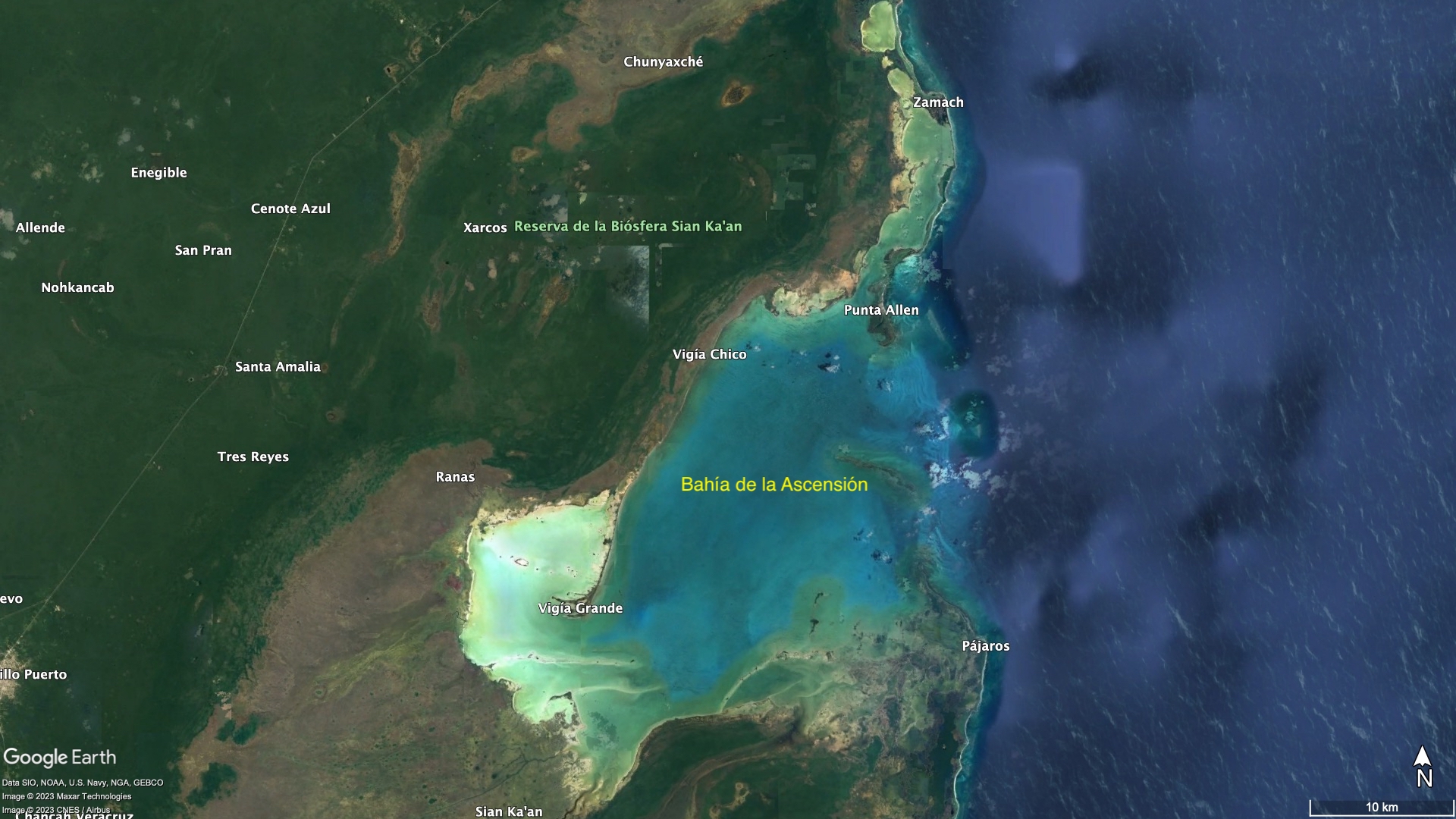
A map of Bahía de la Ascensión, part of the Biosphere Reserve of Sian Ka’an. Image © 2023 Maxar Technologies & 2023 CNES/Airbus
The lobster fishing cooperative based here was as a world example of successful business and community management in the 1990s. But back in the 1980s, other resources such as groupers, snappers, and sharks were also important for local fishers, especially during the lobster-closed fishing season. Later on, with the disappearance of the government-owned national fish processing company and distribution chain, shark and bony fish fishing became more of a subsistence and local demand thing for local fishers.
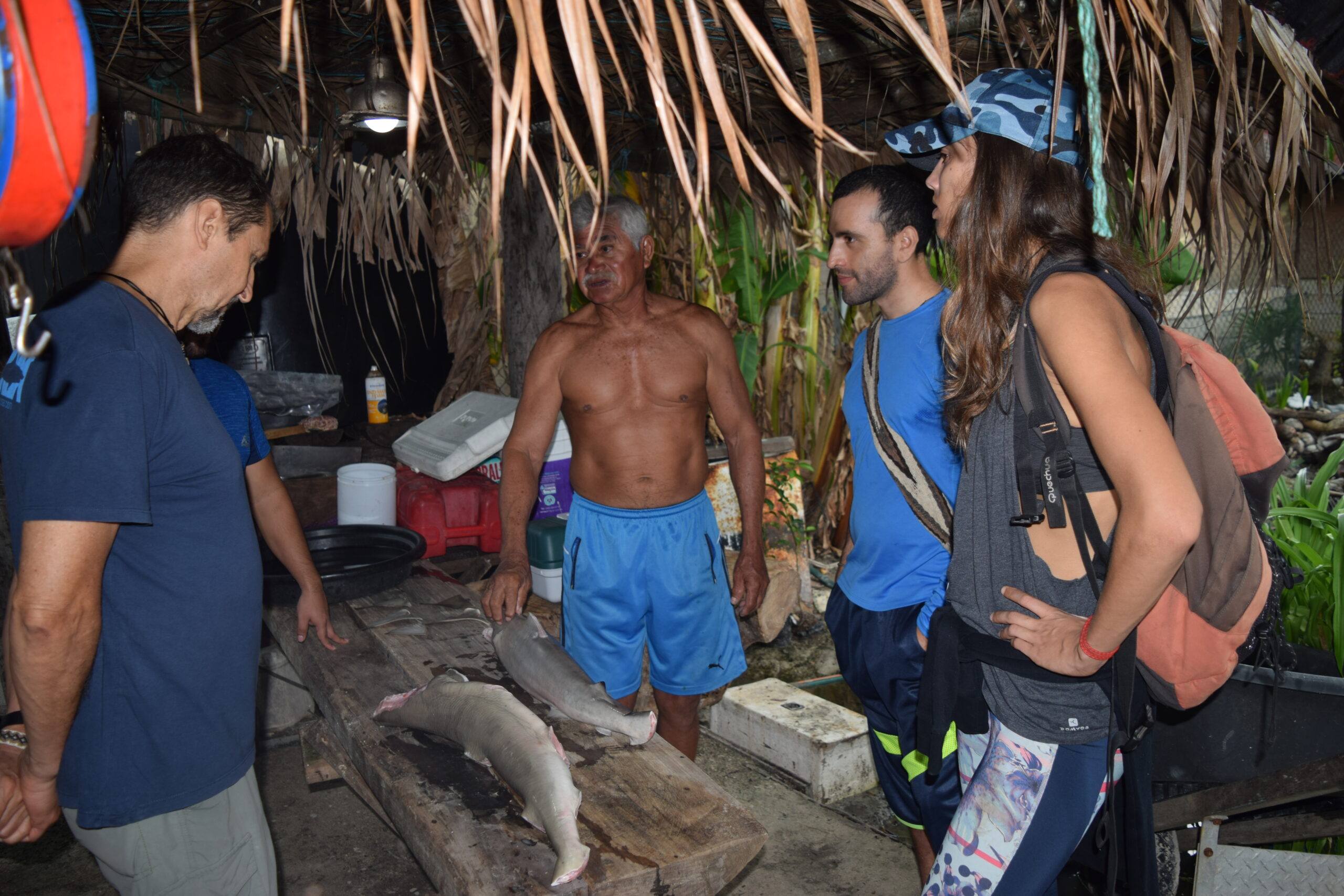
A local fisherman shows us his catch of small sharks from the previous night. This product is consumed locally by his family or by neighbors that buy it from him. Photo © Ramón Bonfil
The interesting story is that during my early years as a shark researcher, I visited Bahía de la Ascensión in 1986 in order to tag sharks as part of the research program I headed at the National Fisheries Institute in Yucalpetén, near Mérida, Yucatán. Back then, the place had not yet been declared a Biosphere Reserve (that happened in 1987), but it was still a remote paradise full of life and beauty. On that occasion we managed to tag a juvenile nurse shark, Ginglymostoma cirratum, and a newborn lemon shark, Negaprion brevirostris, with M dart tags from the NMFS cooperative shark tagging program, and now with this new project we are starting, we plan to use a multidisciplinary approach to unveil for the first time, which species of sharks and rays actually had a nursery area here 40-50 years ago, and which still use the bay as a nursery now.


Top: a newborn lemon shark being tagged by me and my assistant, back in 1986. Bottom: the baby lemon shark was let go, trailing his M-dart behind (yellow plastic cap can be seen just before the 2nd dorsal fin). Photos © Ramón Bonfil
This trip added a further 9 interviews to our database and an additional 2 species of rays that could have used Bahía de la Ascensión as nursery decades ago.

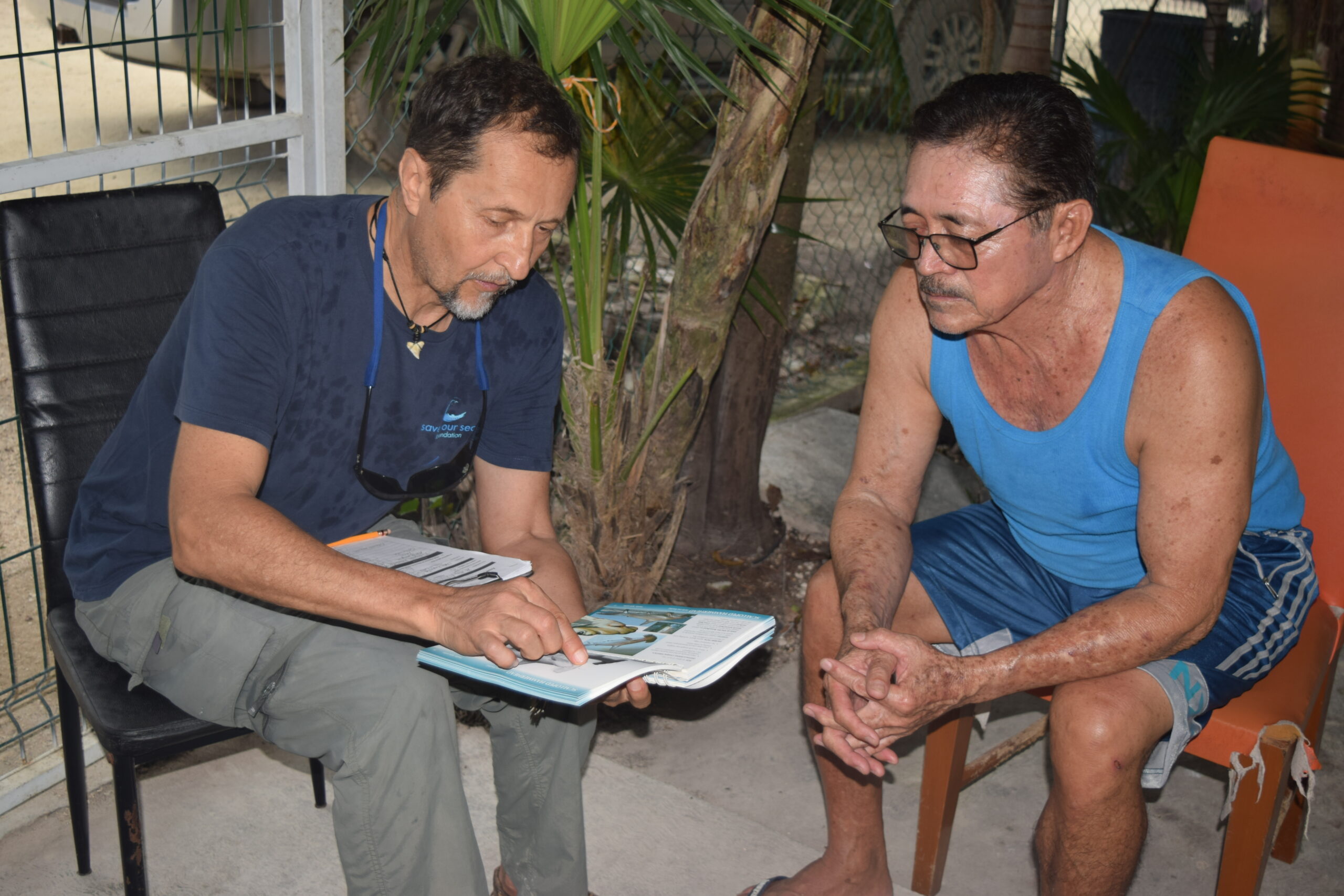
Our team interviewing some old fishers in Punta Allen
We have a tremendous task in front of us, but the team is excited and enthusiastic to begin our direct sampling campaigns next summer. Stay tuned!
